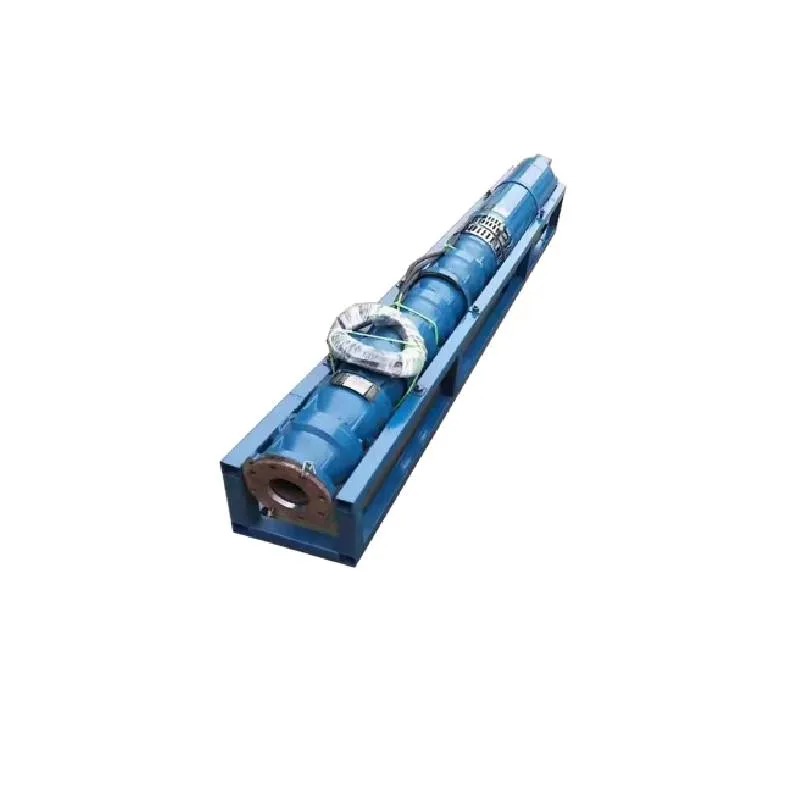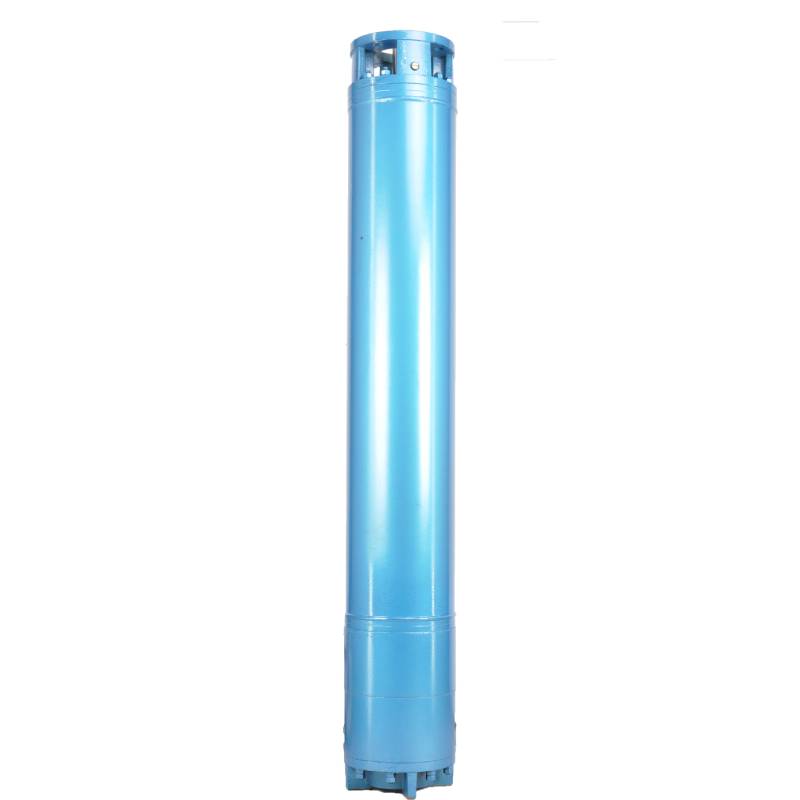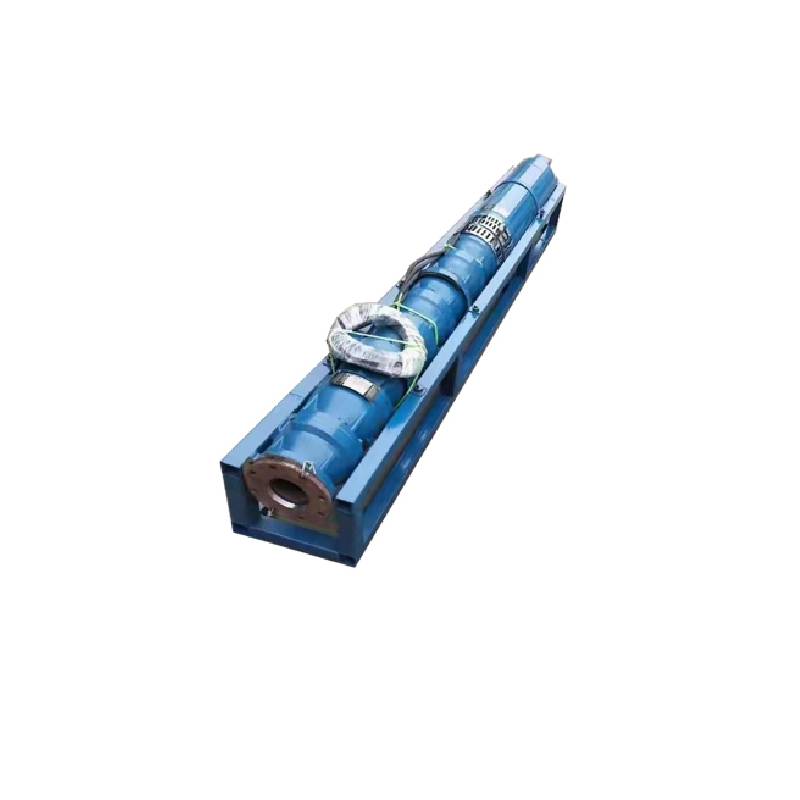Sep . 16, 2024 08:29 Back to list
oil filled vs water filled submersible pump
When it comes to submersible pumps, the choice between oil-filled and water-filled designs is crucial, as it directly affects performance, maintenance, and efficiency. Each type has its distinct advantages and applications, making it essential to understand their characteristics before making a decision.
Oil-filled submersible pumps are equipped with oil as a coolant and lubricant for their motors. This design allows for better thermal management, as oil typically has a higher thermal conductivity than water. As a result, oil-filled pumps can operate at higher temperatures and under more demanding conditions. This increased thermal efficiency means these pumps can be used in deeper wells or in applications where high temperatures might pose an issue, such as geothermal drilling.
Furthermore, oil-filled submersible pumps generally have better longevity due to the lubrication they provide to the motor components. The oil serves not only as a coolant but also protects the motor from corrosion and wear, extending the lifespan of the pump. Additionally, these pumps can maintain better mechanical integrity under pressure, making them suitable for heavy-duty applications.
On the other hand, water-filled submersible pumps are filled with water, which serves both as a coolant and as the working fluid. These pumps tend to be more cost-effective and simpler in design. Water is an abundant resource, and in many cases, using water as a fill medium reduces manufacturing costs and simplifies maintenance procedures. This makes water-filled pumps particularly attractive for residential and agricultural applications, where high performance is necessary but extreme conditions are not expected.
oil filled vs water filled submersible pump

However, water-filled submersible pumps do not handle high temperatures or severe conditions as effectively as their oil-filled counterparts. They may overheat and require more frequent servicing if used in demanding environments. Nevertheless, they are a popular choice for shallow well applications, drainage, and light industrial duties due to their lighter weight and ease of installation.
When considering maintenance, oil-filled pumps can be more complex. Regular checks on oil levels and potential leaks are essential to ensure proper operation. In contrast, water-filled pumps tend to require more simple maintenance procedures focused on preventing debris ingress and ensuring the motor remains submerged.
In summary, the selection between oil-filled and water-filled submersible pumps hinges on the specific needs of the application. For demanding conditions where longevity and efficiency are paramount, oil-filled pumps may be the superior choice. Conversely, for more straightforward applications where cost and ease of use are more critical, water-filled pumps provide a reliable solution. Careful assessment of the operational environment and intended use will guide users in selecting the most suitable pump type.
-
Reliable 4-inch Deep Well Submersible Pump for Constant Water
NewsSep.01,2025
-
175QJB Deep Well Submersible Pump: High-Efficiency & Reliable
NewsAug.31,2025
-
Efficient 250QJP Peep Well Submersible Pump for Deep Well Water
NewsAug.30,2025
-
Deep Well Pump Installation Guide: Reliable Submersible Pumps
NewsAug.29,2025
-
125QJR Deep Well Submersible Pump - High Performance & Reliable Water Supply
NewsAug.28,2025
-
Water Filled Submersible Pump
NewsAug.26,2025
-
 Reliable 4-inch Deep Well Submersible Pump for Constant WaterNeed a dependable 4-inch deep well submersible pump? Our high-efficiency models provide consistent water flow for residential, irrigation, and agricultural needs. Find the best deep well pumps for sale & ensure reliable water supply. Shop now!Detail
Reliable 4-inch Deep Well Submersible Pump for Constant WaterNeed a dependable 4-inch deep well submersible pump? Our high-efficiency models provide consistent water flow for residential, irrigation, and agricultural needs. Find the best deep well pumps for sale & ensure reliable water supply. Shop now!Detail -
 175QJB Deep Well Submersible Pump: High-Efficiency & ReliableAchieve reliable, high-efficiency water supply with our 175QJB Deep Well Submersible Pump. Perfect for agricultural irrigation, industrial water needs, and municipal use. Explore durable performance and inquire today!Detail
175QJB Deep Well Submersible Pump: High-Efficiency & ReliableAchieve reliable, high-efficiency water supply with our 175QJB Deep Well Submersible Pump. Perfect for agricultural irrigation, industrial water needs, and municipal use. Explore durable performance and inquire today!Detail -
 Efficient 250QJP Peep Well Submersible Pump for Deep Well WaterDiscover the powerful 250QJP Peep Well Submersible Pump. Engineered for high-efficiency and reliability, it's ideal for deep well water supply, industrial, and agricultural irrigation. Get consistent performance. Explore our range today!Detail
Efficient 250QJP Peep Well Submersible Pump for Deep Well WaterDiscover the powerful 250QJP Peep Well Submersible Pump. Engineered for high-efficiency and reliability, it's ideal for deep well water supply, industrial, and agricultural irrigation. Get consistent performance. Explore our range today!Detail
